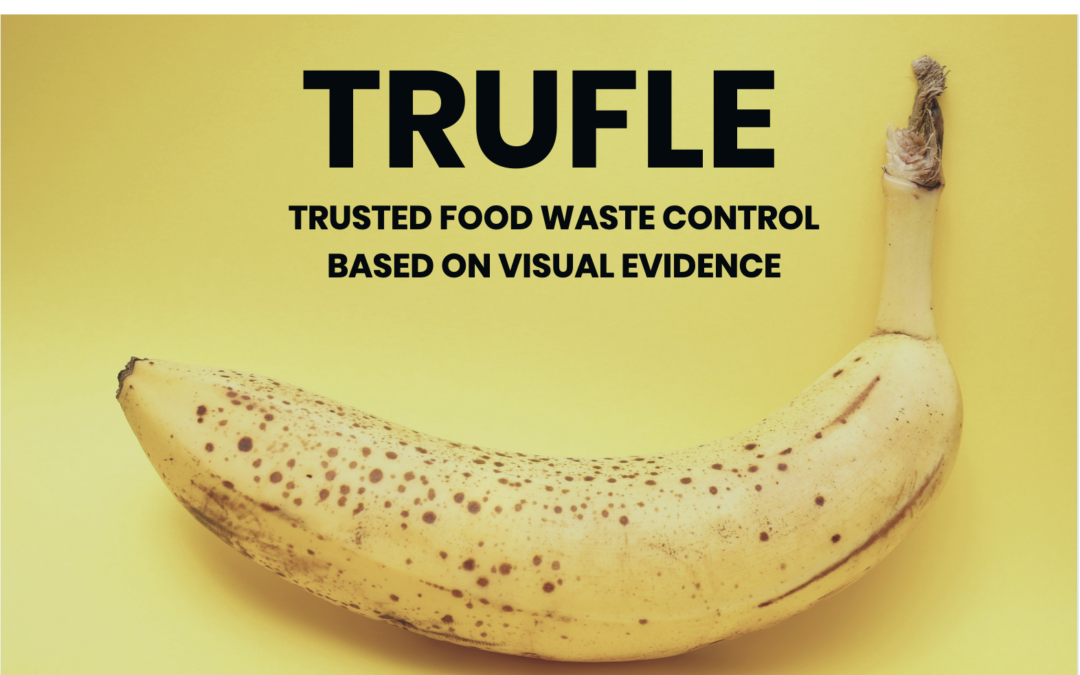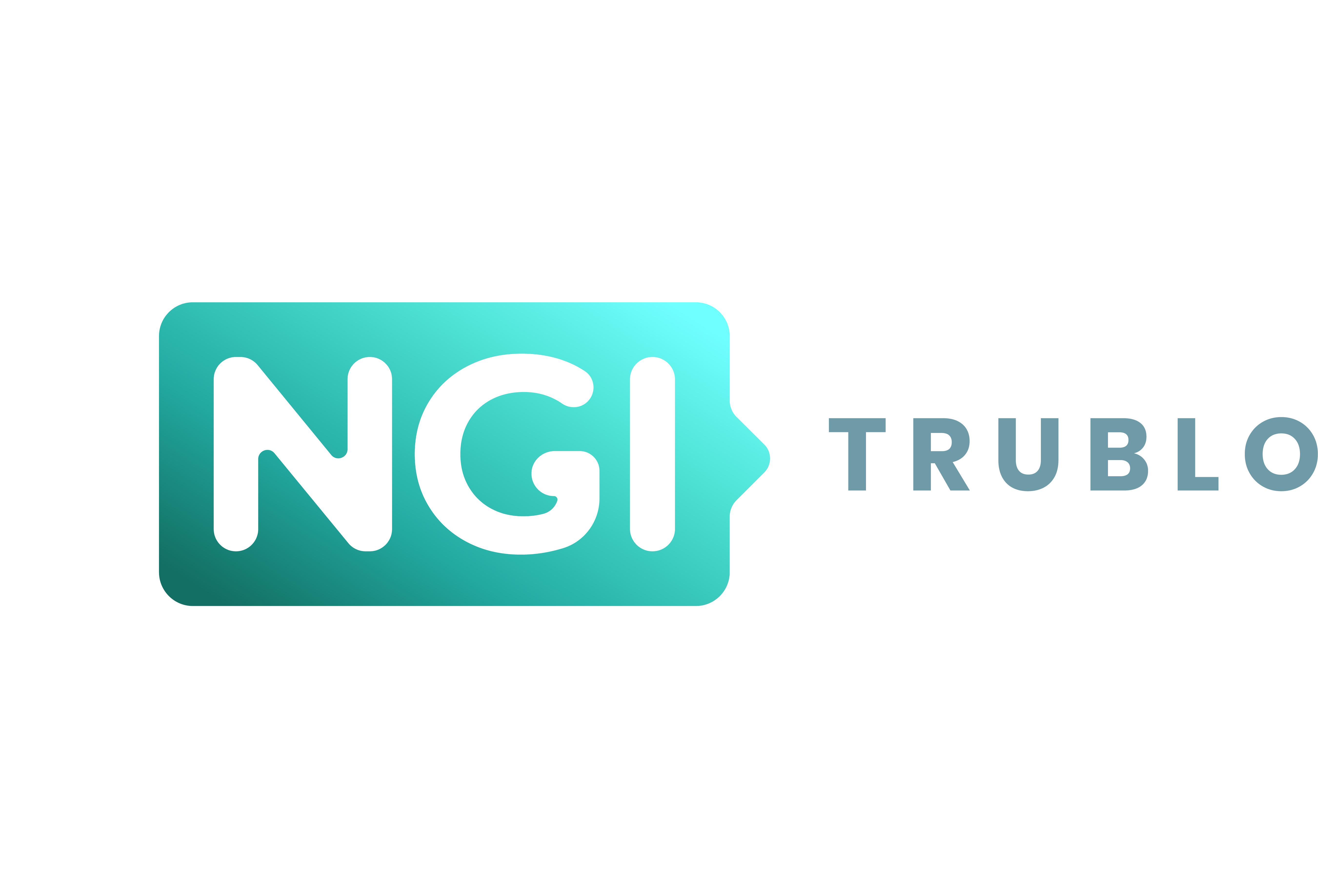
A Revolution in Food Waste Reduction: TRUFLE’s Blockchain and Deep Learning Solution
The world is facing an unprecedented rise in food waste over the past years. While yields from farming have increased the competition in the food market is one reason for high amounts of food which is never consumed.
The UN Environment Programme Food Waste Index revealed that 17% of the food available to consumers is never eaten but thrown away. In total, 900 million tonnes of food are thrown away, according to a 2021 global report. This includes supermarkets, households and restaurants. 60% of the food waste occurs in households. Numbers for the EU estimate on a per capita base Europeans waste up to 127 KG of food every year.
To combat this pervasive problem, an early-stage project called TRUFLE has emerged. TRUFLE leverages blockchain and deep learning technologies to provide a revolutionary solution for food waste reduction. The early-stage project was started by an innovative European SME called INLECOM. The company has offices in Brussels, London, Athens and Dublin.
Introduction to TRUFLE and its revolutionary food waste reduction solution
TRUFLE aims to provide full auditability, trust and transparency of information reported by retailers, food service providers and consumers about their discarded food and is linked to existing solutions, reliably classifying and quantifying the quantity of food waste with the scope of incentivized food-waste reporting. The solution is expected to pave the way for incentivised food reporting mechanisms to trust information from users and link trusted data to food waste reporting incentives.
The predictive capability enables TRUFLE to provide real-time insights and data to food suppliers and distributors about their products. By leveraging the power of blockchain and deep learning, TRUFLE can reduce food waste and increase the trust and exchange of information among its partners.
The TRUFLE platform is designed to be a fully-integrated supply chain solution. It comprises two main components: a blockchain-based ledger and a deep learning algorithm. The blockchain-based ledger securely stores and manages data about product supply and demand, allowing for accurate and secure data sharing between partners.
The project recently published a short descriptive video on how the solution works.
Benefits of TRUFLE’s blockchain and deep learning technologies
TRUFLE’s blockchain and deep learning technologies provide a range of benefits to food suppliers and distributors. By leveraging the power of blockchain, TRUFLE can ensure that all data is securely stored and protected. This makes it easier for food suppliers and distributors to share information and data, reducing the risk of data loss or theft.
The deep learning algorithm also enables TRUFLE to forecast demand for certain food items accurately. This predictive capability can help food suppliers and distributors avoid overproduction and reduce food waste. By leveraging the power of deep learning, TRUFLE can also identify patterns and trends in food demand, enabling food suppliers and distributors to optimize their production processes.
How TRUFLE’s technology works
TRUFLE’s technology is based on a combination of blockchain and deep learning algorithms. The blockchain-based ledger securely stores data about cases of food waste, allowing for accurate and secure data sharing between partners. This data is then used by the deep learning algorithm to accurately forecast demand for certain food items.
The deep learning algorithm is powered by a neural network that uses a range of data points, such as past sales and weather patterns, to create accurate predictions. This predictive capability enables TRUFLE to identify and reduce food waste in real time. The platform also includes various features, such as automated order processing and tracking, that make it easier for food suppliers and distributors to manage their supply chains.
TRUFLE’s impact on food waste reduction
TRUFLE’s technology has the potential to revolutionize the way food suppliers and distributors manage their supply chains. By leveraging the power of blockchain and deep learning, TRUFLE can enable food suppliers and distributors to accurately predict demand for certain food items and reduce food waste. This predictive capability can also help food suppliers and distributors optimize production processes and reduce operational costs.
The use of blockchain and deep learning technologies also has the potential to increase trust and exchange of information among food suppliers and distributors. By securely storing and managing data about product supply and demand, TRUFLE can help food suppliers and distributors share information and data securely and efficiently. This can help increase transparency in the food supply chain and reduce the risk of data loss or theft.
How TRUFLE’s technology can increase trust and exchange of information
TRUFLE’s technology can increase trust and exchange of information among food suppliers and distributors. By leveraging the power of blockchain, TRUFLE can ensure that all data is securely stored and protected. This makes it easier for food suppliers and distributors to share information and data, reducing the risk of data loss or theft.
Deep learning algorithms also enable TRUFLE to accurately forecast demand for certain food items. This predictive capability can help food suppliers, and distributors better plan their production processes and reduce the risk of overproduction. By providing real-time insights and data about product supply and demand, TRUFLE can help increase trust and exchange of information among its partners.
Examples of TRUFLE’s implementation in food waste reduction
A key goal of the project is to provide a simple and reliable way to report on food waste, where the people involved are motivated to provide data for better food management.
Food manufacturers, supermarkets and other members of the food chain will be able to uwe TRUFLE to optimize their production processes and reduce operational costs. By leveraging the power of deep learning, TRUFLE can accurately forecast demand for certain food items and help food manufacturers avoid overproduction and reduce their costs.
Challenges faced by TRUFLE
Despite its many benefits, TRUFLE’s technology is not without its challenges. One of the main challenges is data accuracy and consistency. A key challenge is to motivate people who are part of the food process chain to report food waste when it happens.
This might sound counterintuitive. But a future goal here could be to reduce the amount of food waste from around 17% too much less – which would help everyone involved to save costs and avoid losses from food which has never been consumed.
Another challenge is scalability. As the number of users increases, TRUFLE’s technology must be able to scale up to meet demand. This requires the platform to process large amounts of data quickly and accurately.
Solutions for overcoming the challenges
To overcome the challenges faced by TRUFLE, the platform must prioritize data security, data trustability and scalability. To ensure data privacy, TRUFLE must use cutting-edge encryption technology to ensure that all data is securely stored and protected. To address scalability, the platform must process large amounts of data quickly and accurately.
TRUFLE must also ensure that its deep learning algorithms are accurate and current. By leveraging the latest deep learning algorithms, TRUFLE can ensure that its predictive capabilities are accurate and reliable. This will help the platform accurately forecast demand for certain items and reduce food waste.
Conclusion
TRUFLE is a revolutionary technology transforming how food suppliers and distributors manage their supply chains. By leveraging the power of blockchain and deep learning, the platform can accurately predict demand for certain nutritional items and reduce food waste. TRUFLE’s technology can also increase trust and exchange of information among food suppliers and distributors, enabling them to share data securely and efficiently.
Project profile:
